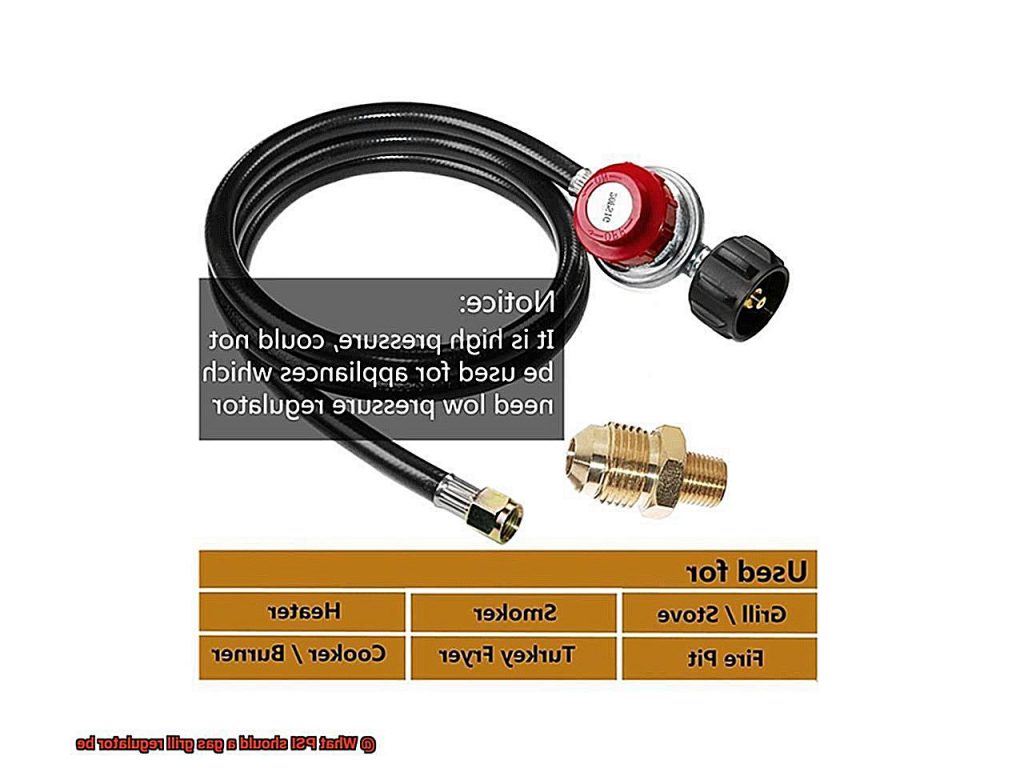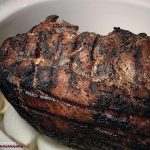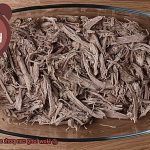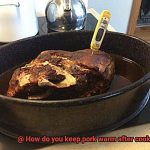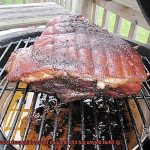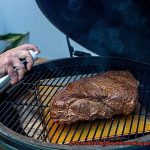The sweet aroma of grilled meat wafting through the air is a sure sign that summer has arrived. There’s nothing quite like cooking up your favorite foods on a gas grill, whether it’s juicy burgers or perfectly charred vegetables. But before you start flipping those patties, it’s essential to understand how your grill works. One crucial component that affects both safety and performance is the pressure regulator.
The pressure regulator controls the flow of gas into your grill, ensuring a steady flame for even cooking and preventing dangerous gas leaks. But what PSI should your gas grill regulator be set at? It’s a common question among grill owners, and the answer varies depending on your specific model and the type of gas you’re using.
In this blog post, we’ll dive deeper into gas grill regulators and explore the optimal PSI range for safe and efficient grilling. We’ll also provide tips on adjusting your regulator properly to get the best performance from your grill. Whether you’re a seasoned pro or just starting out in the world of backyard BBQs, understanding pressure regulators is key to mastering outdoor cooking. So let’s fire up the grill and learn more about what PSI your gas grill regulator should be set to.
Contents
What is a Gas Grill Regulator?
This device controls the flow of propane or natural gas from your fuel tank to your grill, ensuring that the pressure of the gas is consistent and safe for cooking.
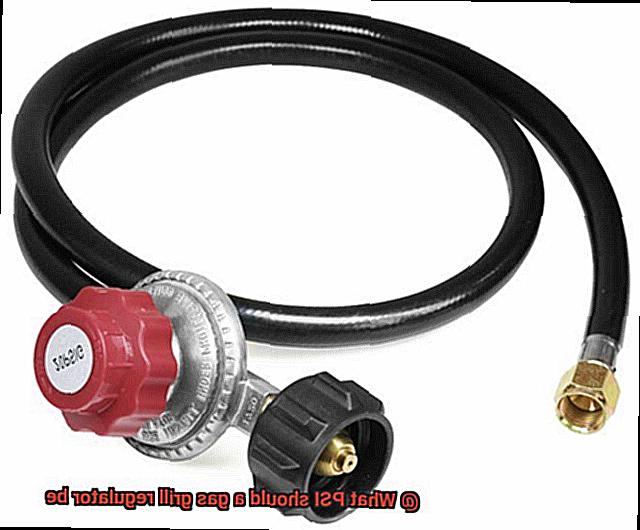
Achieving the perfect heat is key to creating delicious meals on your grill, and that’s where the gas grill regulator comes into play. It reduces the high pressure of the gas in the tank to a lower, safe level for cooking, measured in PSI (pounds per square inch).
The ideal PSI for a gas grill regulator depends on several factors, such as the type of gas being used, the size of the grill, and the length of the gas line. For propane gas grills, a regulator with a pressure output between 10-11 inches water column (WC) is typically required. Natural gas grills require a lower pressure output between 3-5 inches WC.
It’s important to ensure that your gas grill regulator is set correctly for optimal performance and safety. If the pressure is too low, your grill won’t heat up properly, and your food may not cook evenly. Conversely, if the pressure is too high, you risk damaging your grill or causing a fire hazard.
To check your regulator’s pressure, you can use a manometer or a simple soap and water solution to check for leaks. If you notice bubbles forming when applying this solution to connections or hoses, it indicates a leak that requires attention.
Always consult your owner’s manual or contact the manufacturer for specific recommendations regarding your particular grill. Additionally, if you notice any issues with your grill’s performance or flame output, it may be a sign that your regulator needs to be replaced.
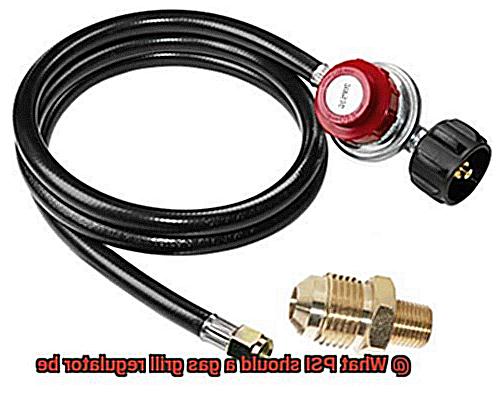
The Importance of Setting the Pressure in Your Gas Grill Regulator
One such detail that often goes overlooked is the pressure setting in your gas grill regulator. However, getting this aspect right can make all the difference in achieving that mouth-watering flavor you crave. In this article, we’ll dive into why setting the pressure in your gas grill regulator is so important and how it can affect not only the taste of your food but also the lifespan of your grill and, most importantly, your safety.
When it comes to heat output, your gas grill regulator is responsible for controlling the flow of propane or natural gas from the tank to the burners and ensuring that your grill operates at the desired temperature. If the pressure is too low, you may struggle to get your grill up to temperature, resulting in longer cooking times and potentially undercooked food. Conversely, if the pressure is too high, you risk overheating your grill or even causing a fire. Therefore, it’s important to set the pressure correctly to achieve efficient cooking and perfectly grilled meals.
In addition to affecting heat output, having the correct pressure in your gas grill regulator can also impact the lifespan of your grill. If the pressure is too high, it can cause wear and tear on the burners and other components, leading to costly repairs or even replacement down the line. On the other hand, if the pressure is too low, it can result in inefficient burning of fuel which can cause blockages and faults within your system. Taking care to set the pressure correctly can help extend the life of your grill and save you money in maintenance costs.
Perhaps most importantly, ensuring that your gas grill regulator is set correctly is crucial for safety reasons. A regulator that is not set correctly can lead to gas leaks or even explosions, creating a dangerous situation for you and your family. To prevent any potential risks, always follow manufacturer recommendations and have a professional check your gas grill regulator regularly.
Ideal Pressure Range for a Gas Grill Regulator
This is a crucial factor that can make or break your grilling experience, from achieving perfect sears to preventing dangerous accidents.
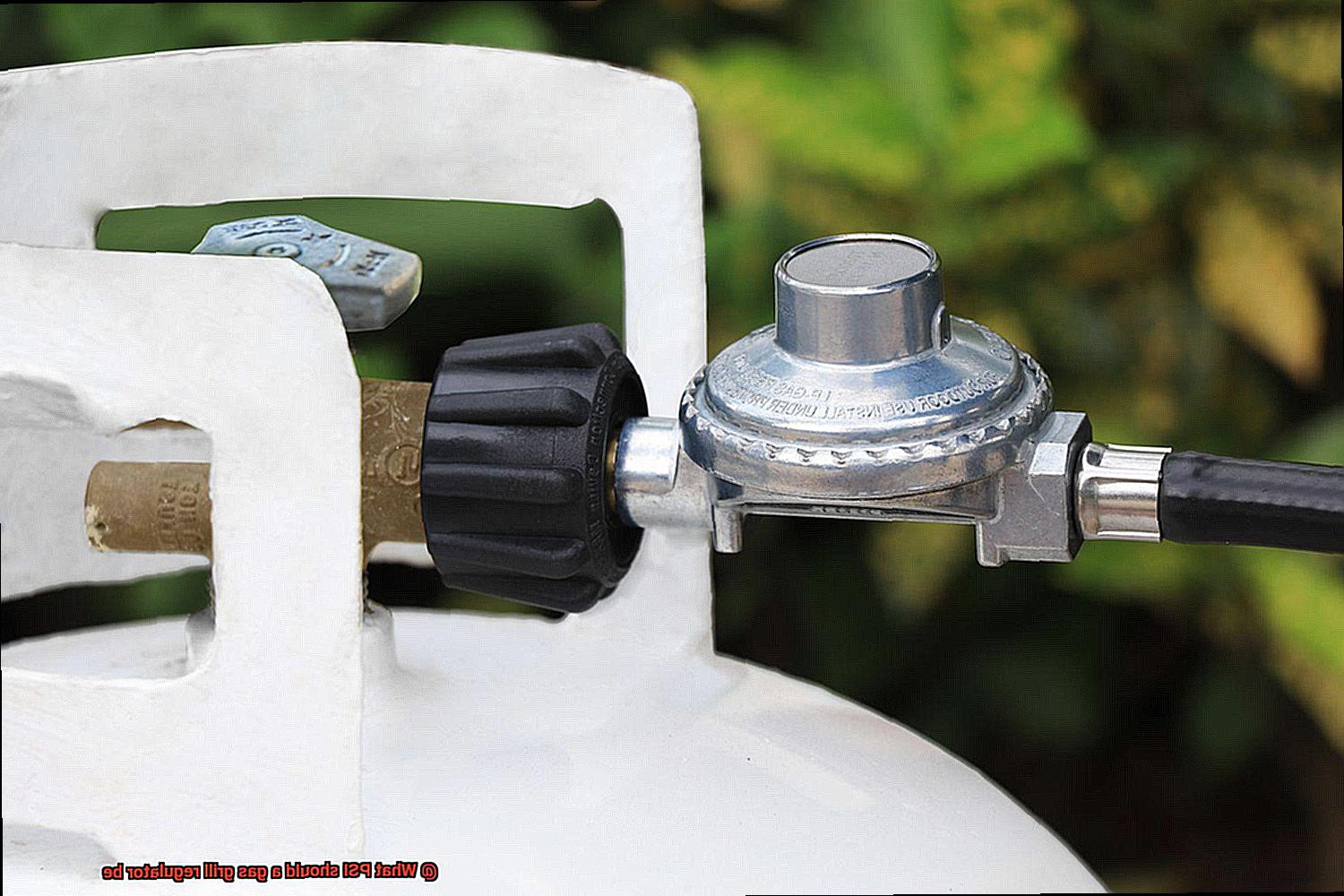
The recommended pressure range for most gas grills falls between 3 and 5 PSI (pounds per square inch). However, it’s important to note that this range can vary depending on the type of grill you have and the manufacturer’s recommendations. Plus, if you’re using propane gas, you’ll need to adjust your regulator accordingly since it typically requires a higher pressure than natural gas.
To ensure that you’re using the correct pressure range for your grill, look no further than your trusty owner’s manual or contact the manufacturer directly. They’ll provide you with specific instructions on how to adjust your regulator and what pressure range is appropriate for your grill.
But don’t stop there – it’s also critical to periodically check your regulator to ensure that it’s functioning properly. Over time, regulators can become clogged or damaged, which can affect the pressure output and put you in danger. If you notice any issues with your regulator or if you’re unsure about the pressure range, don’t hesitate to contact a professional for assistance.
Potential Problems with Low and High Pressure Settings
If so, it’s crucial to know that low and high pressure settings can lead to potential problems. As an expert in the field, I’m here to offer some insights to help you avoid any unwanted mishaps.
Low pressure settings can be a source of frustration for grill owners. Not only can it be challenging to ignite the burners, but weak flames and uneven cooking may also occur. No one wants to serve up undercooked or overcooked food, especially when entertaining guests.
On the other hand, high pressure settings can cause excessive heat that can result in burnt or overcooked food. High pressure can also cause dangerous grease flare-ups that could harm both you and your grill. In severe cases, high pressure can even damage the grill itself, leading to costly repairs or replacement.
To avoid these potential problems, it’s essential to regularly check your regulator’s pressure setting. Most gas grills operate at a recommended pressure of around 10-11 inches of water column (WC), which is equal to 0.36-0.4 PSI. However, always consult your grill’s manual or manufacturer for specific recommendations.
Checking the Pressure in Your Gas Grill Regulator
Then it’s time to learn how to check the pressure in your gas grill regulator like a pro. As a grilling enthusiast, I know firsthand that a malfunctioning regulator can lead to disastrous results, from undercooked meat to dangerous flare-ups. But don’t worry, with a few simple steps, you can ensure that your grill is functioning safely and efficiently.
First things first: you’ll need a manometer. Don’t have one? No problem – they’re readily available at any hardware store or online. Once you have your manometer, turn off the gas supply to your grill and disconnect the hose from the propane tank. Attach the manometer to the end of the hose and turn on the gas supply again. The reading on the manometer should be between 8-11 inches WC for optimal grilling results.
If your pressure reading is too low, it may be time to replace your regulator or clean any obstructions in the gas line. If your pressure reading is too high, you may need to adjust or replace the regulator altogether. But don’t worry – these are simple fixes that can be done with minimal hassle.
By regularly checking the pressure in your gas grill regulator, you’re ensuring that your grill is functioning safely and efficiently. Plus, you’ll be able to avoid any unwanted surprises like weak flames or uneven cooking. It’s important to always follow manufacturer instructions and safety guidelines when working with gas grills to avoid accidents or injuries.
0_TimWCOxkI” >
Conclusion
In summary, your gas grill’s pressure regulator plays a crucial role in ensuring safe and efficient outdoor cooking. It controls the flow of gas into your grill, preventing dangerous gas leaks and ensuring a steady flame for even cooking. However, the ideal PSI range for your gas grill regulator can vary depending on several factors such as the size of your grill, type of gas being used, and length of the gas line.
For propane gas grills, you’ll typically need a regulator with a pressure output between 10-11 inches water column (WC). On the other hand, natural gas grills require a lower pressure output between 3-5 inches WC. But why is this important? Setting the correct pressure in your regulator can impact not only the quality of your grilled meals but also your safety.
Low-pressure settings can result in undercooked food while high-pressure settings can cause burnt or overcooked food, dangerous grease flare-ups, and damage to your grill. To avoid these potential problems, it’s crucial to regularly check your regulator’s pressure setting using a manometer or simple soap and water solution to check for leaks. Always consult your owner’s manual or contact the manufacturer for specific recommendations regarding your particular grill.
Lastly, if you notice any issues with your grill’s performance or flame output, it may be time to replace your regulator.

